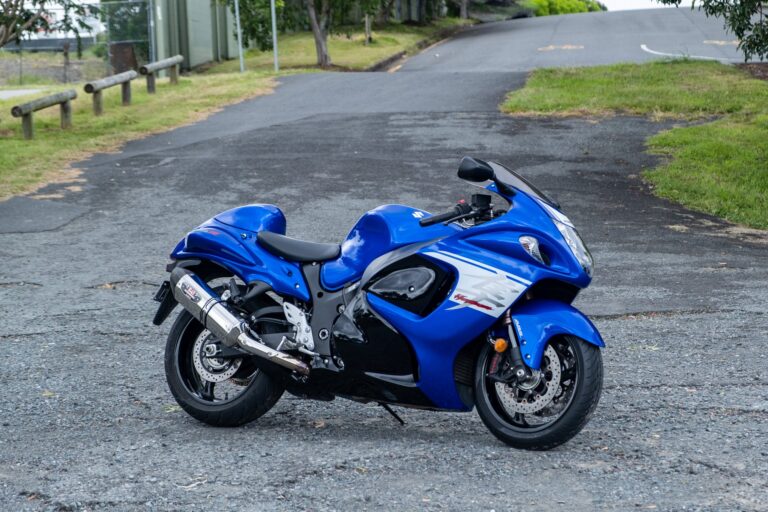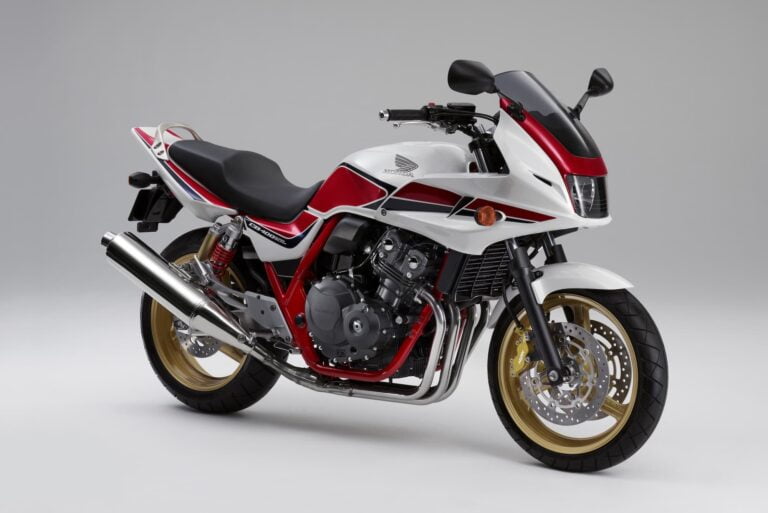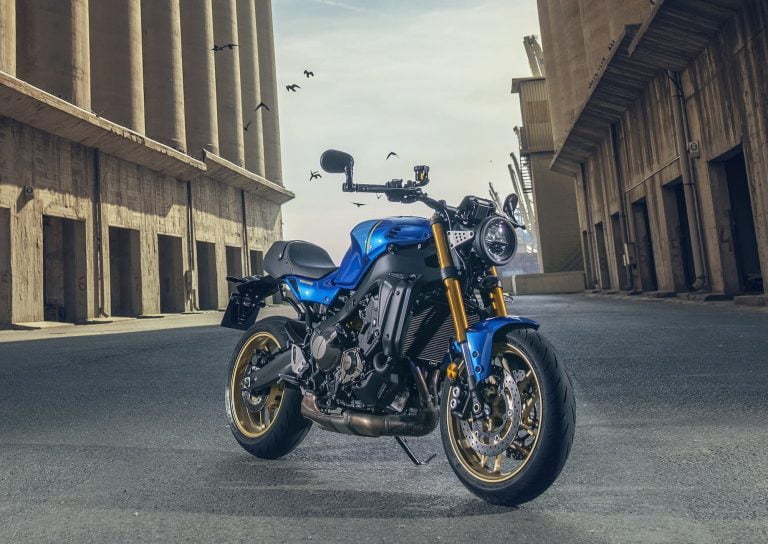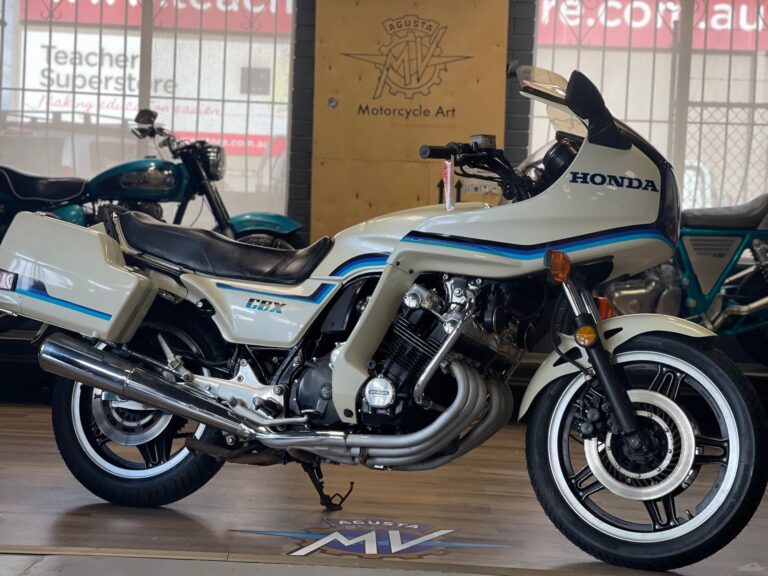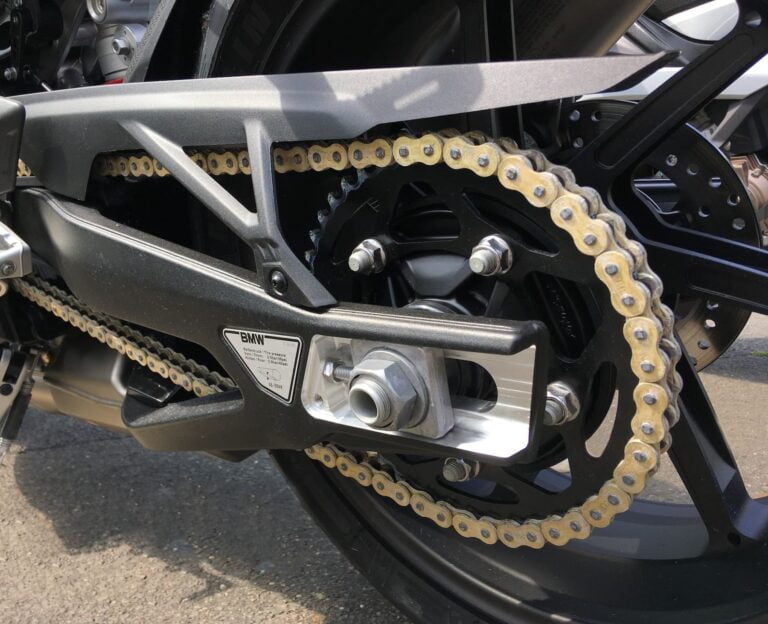On Feb 9, 2022, Triumph showed us first pics of their first electric motorcycle — named the Triumph TE-1 Prototype. It’s now out of testing and development phase and they’re trying to build a viable motorcycle for the road.
And on 12 July 2022, Triumph finished the project, with final specs released.
The initial press release was pretty technical, mostly talking about the collaboration with Williams Engineering and the goals for the next phase
Here are a few things that stood out from the press release and photos that I think are worth mentioning.
You might also like to read about Ducati’s recently announced 2023 electric MotoE prototype.
![Triumph Electric Motorcycle TE-1 Prototype — Final Results [Updated] 1 Triumph TE-1 Final static lhs 3-4](https://motofomo.com/wp-content/uploads/2022/02/Triumph-TE1-Final-static-lhs-3-4-1024x692.jpg)
Are you obsessed with motorcycles?
Well, I am. That’s why I created this site — as an outlet. I love learning and sharing what others might find useful. If you like what you read here, and you’re a fraction as obsessed as I am, you might like to know when I’ve published more. (Check the latest for an idea of what you’ll see.)
Core Specs of the Triumph TE-1 Electric Motorcycle
Triumph finished testing of the TE-1 in mid 2022. Here are the final results.
| Item | Spec | Notes |
|---|---|---|
| Range | 161 km / 100 mi, based on life testing | |
| Peak power | 130 kW / 177 PS / 175 bhp | |
| Peak torque | 109 Nm / 80 lb-ft | |
| Acceleration | 0-60 mph / 0-98 km/h of 3.6 seconds, 0-100 mph / 0-161 km/h of 6.2 seconds | |
| Charging time | 20 minute charging time (0-80%) | |
| Weight | 220 kg / 485 lb, similar to many sport-touring motorcycles |
General Design of the Triumph TE-1
The first thing that stood out from the photos of the Triumph TE-1 is that it looks a lot like an electric Speed Triple. Triumph says it’s more like a Street Triple.
![Triumph Electric Motorcycle TE-1 Prototype — Final Results [Updated] 2 Triumph TE-1 Track riding action](https://motofomo.com/wp-content/uploads/2022/02/Triumph-TE-1-Track-riding-action-1024x795.jpg)
The Triumph TE-1 shares a few concrete design elements with the Speed Triple (pictured above is the RS, but many are similar from recent years):
- General “street sport roadster” design (handlebars, but not way up; limited fairing, no windshield)
- Twin front headlights
- Single-sided swing-arm
- The same wheels as on the RS (the same shape, anyway)
- An IMU — Triumph hasn’t mentioned this, but it’s safe to assume as they mention “front wheel lift control” (which these days usually works via an IMU).
The Speed Triple has been an iconic bike for Triumph, a rare example of a sporty roadster that hasn’t been based on a superbike. But recently, Triumph released the Speed Triple RR, with a fairing — so maybe the same is in stock for Triumph’s electric motorcycle future.
Of course, there are many significant differences between the TE-1 and the Triumph Speed Triple
The chassis of the Triumph TE-1 is very different. It has to accomodate a different motor and fuel concept, after all.
The TE-1 also has integrated lights (which may not make it into production in all markets due to regulations), and of course, no exhaust pipe — leaving the rear wheel exposed with ease.
The Engine of the Triumph TE-1 Electric Motorcycle — Electric
The engine is, of course, one of the most important parts of a motorcycle. The Triumph’s electric motor is a liquid-cooled integrated motor and inverter. The motor was developed by Integral Powertrain.
The integration of the motor and inverter means that there are no huge cables, busbars, or separate cooling circuits needed. It’s all built into one unit.
In the original press briefings, Triumph was mum about the power and torque specs of the unit. They said that they achieved peak and continuous power densities of 13 kW / kg and 9 kW / kg respectively. With a 10 kg / 22 lb motor, I estimated peak and continuous power of 130 kW / 90 kW (174 bhp / 121 bhp). This estimate ended up being exactly what they cited in the final press release.
![Triumph Electric Motorcycle TE-1 Prototype — Final Results [Updated] 7 Triumph TE-1 Electric Motorcycle Prototype rhs side view](https://motofomo.com/wp-content/uploads/2022/02/Triumph-TE-1-Electric-Motorcycle-Prototype-rhs-side-view-1024x682.jpg)
Ride gear of the Triumph TE-1 — Öhlins and Brembo
![Triumph Electric Motorcycle TE-1 Prototype — Final Results [Updated] 8 Triumph TE1 Ohlins rear shock](https://motofomo.com/wp-content/uploads/2022/02/Triumph-TE1-Ohlins-rear-shock-1024x746.jpg)
It’s always interesting to note how much in common electric motorcycles have with internal combustion engine bikes.
Apart from the motor and chassis, there are many things that are customisable and that have significant impact on ride quality. These are things like the wheels, tyres, suspension, brakes, and handlebars.
The wheels of the Triumph TE-1 look a lot like the ones on the current Triumph Speed Triple RS — cast aluminium alloy multi-spoke wheels.
The front and rear suspension of the TE-1 are by Öhlins. The rear shock is also an Öhlins unit, and is a custom one for the TE-1.
Finally, the front brakes on the Triumph TE-1 are Brembo M50 calipers. These are high-spec, but not current superbike spec; time will tell whether Triumph decides to upgrade these to the latest Stylema calipers.
See here for our FAQ on motorcycle braking systems, including a quick discussion of types of Brembo brakes.
Drive train of the TE-1 — Belt drive
The last thing that I think is really interesting is that Triumph has opted for a belt drive for the TE-1.
![Triumph Electric Motorcycle TE-1 Prototype — Final Results [Updated] 9 Triumph TE-1 Electric Motorcycle Prototype Gates carbon belt drive](https://motofomo.com/wp-content/uploads/2022/02/Triumph-TE-1-Electric-Motorcycle-Prototype-Gates-carbon-belt-drive-1024x682.jpg)
Using a belt drive is pretty uncommon on sport bikes, which usually have chain drives, but it’s possible. Buell sportbikes have them, for example.
What caught my attention is that the belt being used is a Gates Carbon Drive belt. This is a kind of belt I first came to know of when building and working on electric bikes (i.e. bicycles).
Gates builds high-quality belts for cyclists — they’re strong and don’t need to be adjusted for tension (on bicycles).
Sound of the Triumph TE-1
Triumph says that the sound of the TE-1 is “thrilling”, “pure”, and “characterful”. Not sure about that, but I do admit it makes the hairs on the back of my neck stand up in a very different way to their combustion engines.
Listen to these two tracks below — one on the dyno, and another of the track fly-by shots.
These audio files are edited, from Triumph’s promotional videos, also removing the background noise as much as possible.
What we still don’t know about the Triumph Electric Motorcycle Prototype
When I first wrote this article in Feb 2022, at the beginning of testing, I stated that we didn’t know the range, power, weight, and price.
Well, we do know the first three. Still, we don’t know the fourth. The general look of the bike, plus the high-spec gear (Öhlins suspension, Brembo M50 calipers) does imply it’ll at least be in the Speed Triple RS range — but probably higher.
We still don’t know the exact specs of the suspension. And the final price — if this ever goes to production — is a pretty critical one in helping people make a decision.
What’s next for the Triumph TE-1 Prototype?
Prototypes are all very well, but I dare say that whether it goes into production depends on whether the market can accept the range, and whether it can be built to a semi-reasonable price.
With the prototype testing finished as of mid 2022, they’ve now finished road and track testing, the purpose of which was to calibrate power output, throttle sensitivity, range, ride modes, and a few other technical aspects like thermal flow and software testing.
Triumph also did track testing to check handling, acceleration, braking/regeneration, traction control, and front wheel lift control.
So stay tuned for further press releases, when we might hear more about the first Triumph electric motorcycle that you might actually be able to buy.

![Triumph Electric Motorcycle TE-1 Prototype — Final Results [Updated] 3 Triumph TE-1 Electric Motorcycle Prototype rear 3-4 view](https://motofomo.com/wp-content/uploads/2022/02/Triumph-TE-1-Electric-Motorcycle-Prototype-rear-3-4-view-1024x682.jpg)
![Triumph Electric Motorcycle TE-1 Prototype — Final Results [Updated] 4 Triumph Speed Triple RS RHS exterior static on dirt road](https://motofomo.com/wp-content/uploads/2022/02/Triumph-Speed-Triple-RS-RHS-exterior-static-on-dirt-road-1024x678.jpg)
![Triumph Electric Motorcycle TE-1 Prototype — Final Results [Updated] 5 Triumph TE-1 Electric Motorcycle Prototype chassis](https://motofomo.com/wp-content/uploads/2022/02/Triumph-TE-1-Electric-Motorcycle-Prototype-chassis-1024x682.jpg)
![Triumph Electric Motorcycle TE-1 Prototype — Final Results [Updated] 6 Triumph TE-1 Electric Motorcycle Prototype rear tail light](https://motofomo.com/wp-content/uploads/2022/02/Triumph-TE-1-Electric-Motorcycle-Prototype-rear-tail-light-1024x682.jpg)
